
Here's what you must know about dietary fibre and how it helps you maintain good health.
What is dietary fibre?
Dietary fibre found in plant cells is a type of carbohydrate is resistant to the body's digestive enzymes. Dietary fibre has no nutrients or calories but it is very important for many biological functions.
Courtesy: Gud2Eat.com
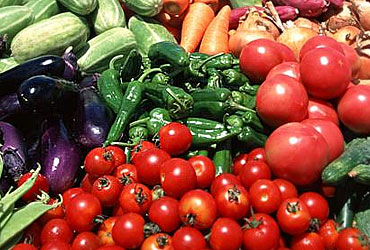
Dietary fibre is found in the edible parts of plants
Dietary fibre cannot be broken down by human digestive enzymes. Fibre is non-digestible carbohydrates and is available in two forms soluble and insoluble fibre.

How much fibre do you need daily?
According to the American Academy of Pediatrics, "a person's daily intake of fibre should equal his or her age plus 5 grams (thus, for a 7-year-old, 7 + 5 = 12 grams a day) up to a maximum of 35 grams a day.

Why do we need fibre in our DAILY diet?
Fibre helps regularise bowel movements; fibre reduces glucose absorption and reduces risk of diabetes; fibre helps remove harmful toxins; fibre reduces bad cholesterol and reduces risk of heart disease.

What types of fibre are available in food?
There are two types of dietary fibre, soluble and insoluble. Insoluble fibre (lignin, cellulose, and hemicellulose) is not soluble in water; soluble fibre (pectin, gum, and mucilage) is soluble in water.

Insoluble fibre's (water insoluble) health benefits
Insoluble fibre increases faecal bulk and moves waste through the colon faster; relieves us of constipation; lowers blood sugar levels; found in whole grains, nuts (skin) and vegetables (skin).

Soluble fibre (water soluble) health benefits
Soluble fibre softens stool and makes elimination easier; It binds with cholesterol helping excretion thus reducing the risk of heart disease; found in fruits, vegetables, grains, beans.

What are the food sources of fibre?
Fibre is found fruits, vegetables, whole grains, and beans. Oat bran, barley, kidney beans, and black-eyed peas contain more soluble fibre than foods such as wheat bran, brown rice, lettuce, and spinach.

Foods rich in fibre lowers cholesterol
Soluble fibre in foods binds with bile acids and excretes them -- leading the liver to produce more bile acids (bile acids are made out of cholesterol) which are vital for digestion -- thus lowering cholesterol levels.

Fibre and constipation
People who eat a high-fibre diet are less likely to become constipated. The water-holding capacity of fibre helps soften stools and prevents constipation, provided that you drink enough fluids.
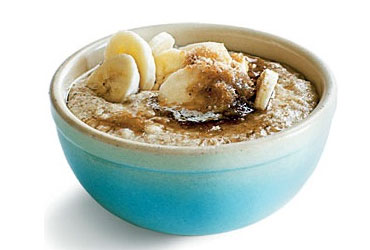
Fibre and colon cancer
Fibre, particularly insoluble fibre, may decrease the risk of colon cancer by increasing the speed of elimination. This reduces the amount of time harmful carcinogens are in contact with the intestinal cells.

Fibre and satiety
Bran muffins, beans, whole grains, fruits and vegetables are fibre rich and increase satiety (the feeling of fullness) by adding bulk to foods without additional calories + reducing the risk of obesity.

Fibre and diverticulosis
A high-fibre diet may reduce the risk of diverticulosis by decreasing the pressure within the colon and the formation of diverticulosis. Diverticulosis comes from the inflammation of the intestinal pouches.

Fibre and haemorrhoids
A high-fibre diet may reduce the risk of haemorrhoids by decreasing the straining associated with stool elimination. Haemorrhoids are swollen and inflamed veins around the anus or in the lower rectum.

Fibre in lentils
1 cup cooked lentils = about 16 grams of fibre. Not only do lentils help lower cholesterol, their high fibre content prevents blood sugar levels from rising rapidly after a meal especially good for diabetics.

Fibre in lima beans
1 cup cooked lima beans = about 13 grams of fibre. Lima beans are rich in heart healthy nutrients like folate and magnesium + plus it's a high fibre food -- thus helps lower risk of heart disease.

Fibre in chick peas
1 cup cooked chick peas = about 13 grams of fibre. Magnesium in chickpeas helps veins and arteries to relax which in turn improves blood flow, oxygen and nutrients through the body.

Fibre in kidney beans
1 cup cooked kidney Beans = about 12 grams of fibre. Fibre in kidney beans helps lower cholesterol levels, they also deliver slow burning complex carbohydrates + iron stores that increase your energy.

Fibre in green peas
1 cup cooked Green Peas = about 9 grams of fibre. Add some fresh peas to green salads as it will help lower cholesterol levels and vitamin C in green peas will provide powerful antioxidant protection.

Fibre in papaya
1 ripe papaya = about 6 grams of fibre. Papaya is a heart healthy fruit as it is rich in fibre and has 3 powerful antioxidants like vitamin A, vitamin C and vitamin E.

Fibre in spinach
1 cup cooked spinach = about 4.5 grams of fibre. Spinach helps lower risk of many health problems related to oxidative stress as it contains antioxidants vitamin C, vitamin E, beta-carotene, manganese and zinc.
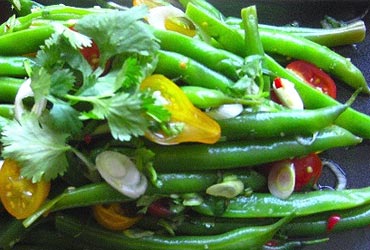
Fibre in green beans
1 cup cooked green beans = about 4 grams of fibre. Apart from fibre, green beans are rich in health protective carotenoids (like lutein, beta-carotene...) and flavonoids (like quercetin, kaemferol, catechins...)

Fibre in oats
1 cup cooked oats = about 4 grams of fibre. 50% of the fibre in oats is soluble thus helps lower blood cholesterol levels. Beans, legumes and barley are also rich in soluble fibre.

Fibre in carrots
1 cup raw carrots = about 3.5 grams of fibre. Apart from being rich in fibre carrots' antioxidants help protect against cardiovascular disease and cancer and also promote good vision, especially night vision.

Fibre in cabbage
1 cup raw cabbage = about 3.5 grams of fibre. Apart from being rich in fibre, cabbage contains many antioxidants that contribute to its cancer prevention benefits.
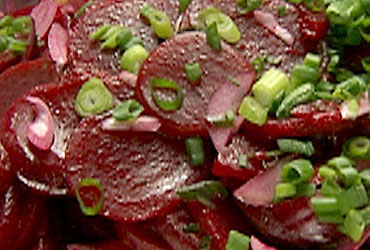
Fibre in beet
1 cup cooked beets = about 3 grams of fibre. Apart from fibre, beets are a unique source of phytonutrients called betalains that have been shown to provide antioxidant, anti-inflammatory, and detoxification support.

Fibre in cauliflower
1 cup cooked cauliflower = about 3 grams of fibre. Apart from fibre, cauliflower contains stellar heart healthy nutrients like vitamin K and omega-3 fatty acids.
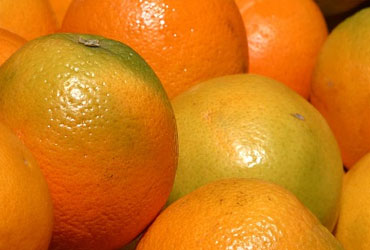
Fibre in orange
1 orange = about 3 grams of fibre. Did you know that orange is rich in fibre + has 170+ phytonutrients and 60+ flavonoids, which are powerful antioxidants with anti-inflammatory properties.

Fibre in potato
1 cooked potato = about 3 grams of fibre. Apart from being a good source of fibre, potatoes are a good source of vitamin B6, which plays many roles in our nervous system, many of which involve brain cell activity.

Fibre in chili pepper
2 teaspoons of chili pepper (dried ground) = 2.5 grams of fibre. Red chilli peppers help reduce blood cholesterol, triglyceride levels, and platelet aggregation.